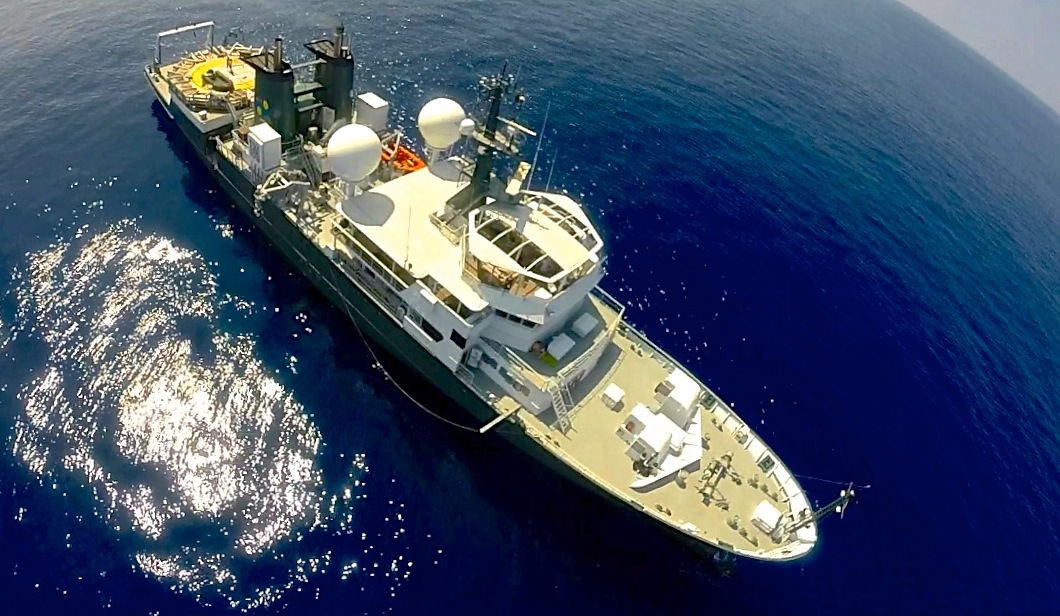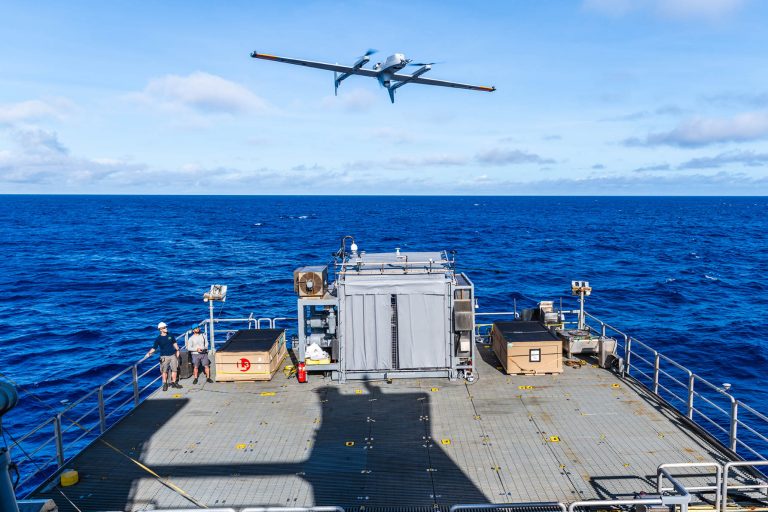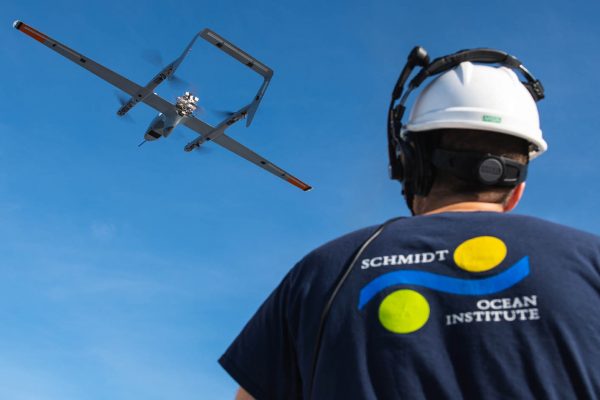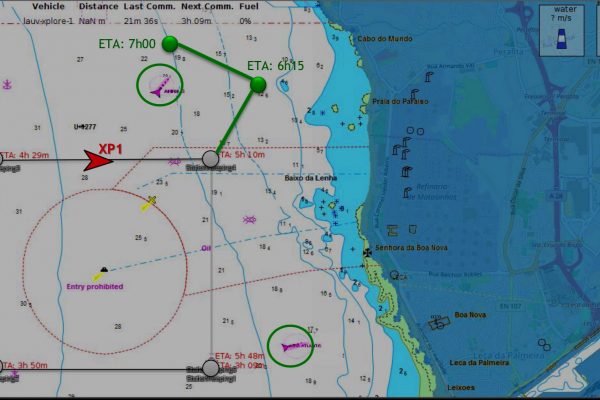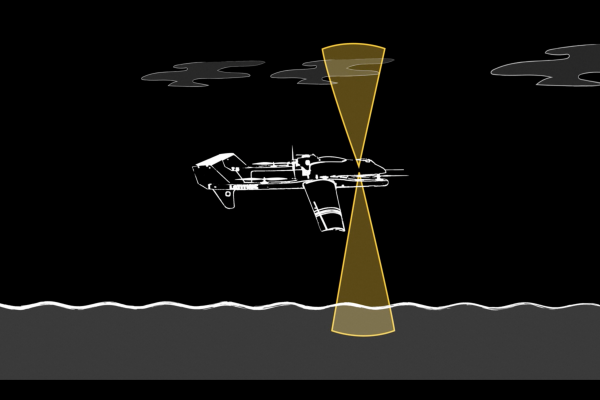Schmidt Ocean Institute supports drone or Unmanned Aerial Vehicles (UAV) operations with rental systems for supported projects aboard R/V Falkor.
R/V Falkor can serve as an oceanographic platform for Unmanned Aerial Vehicles (UAV). These systems, sometimes referred to as Unmanned Aerial Systems (UASs) are used to sample the atmosphere, as a force multiplier to allow sensors to cover large areas of ground while Falkor conducts other science and to collect video and still images. Falkor supported UAVs can range from small, consumer grade, quadcopter units – used to film video for outreach purposes – all the way to large, gasoline powered units able to carry sensor payloads and cover over a 100 km at a time.
